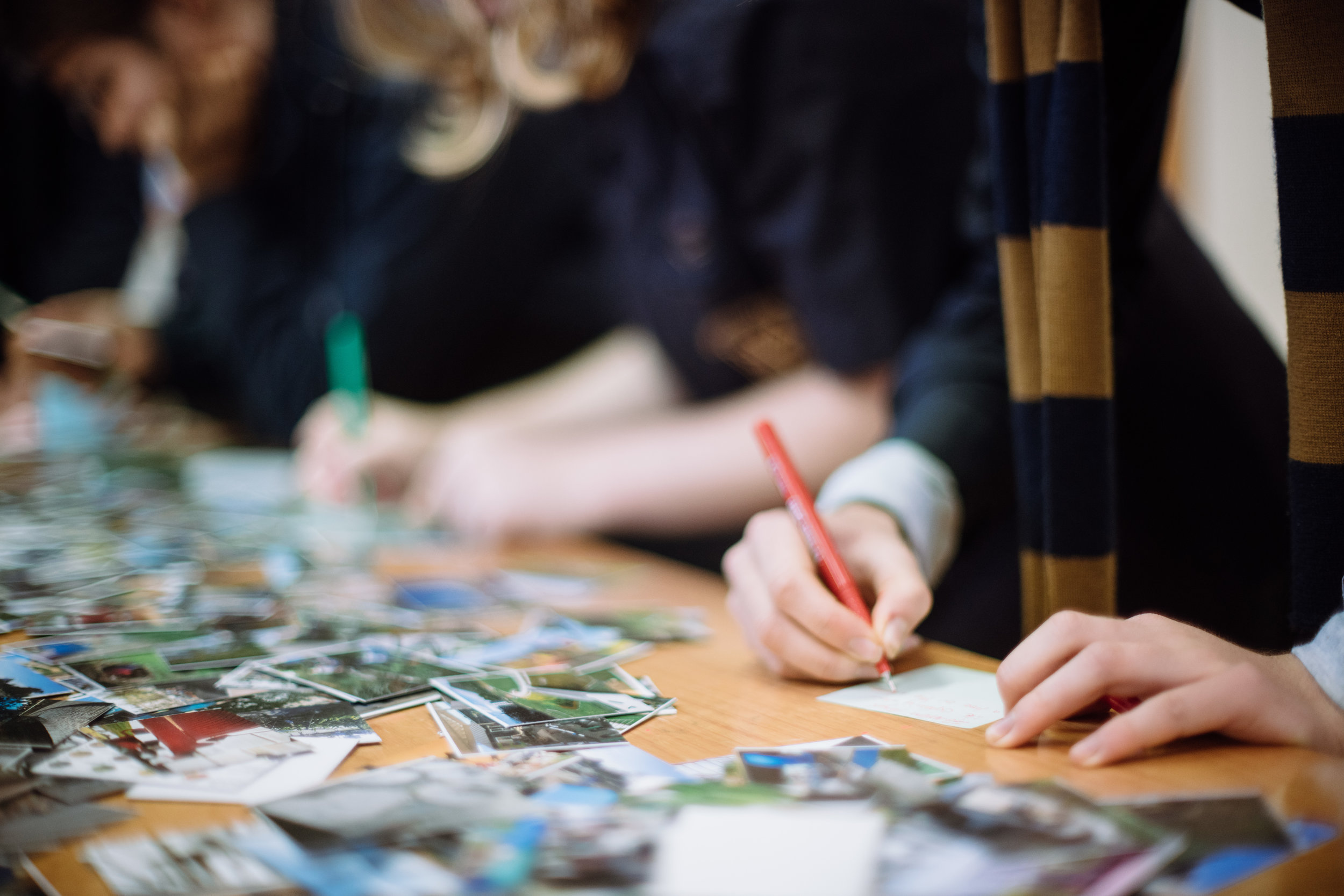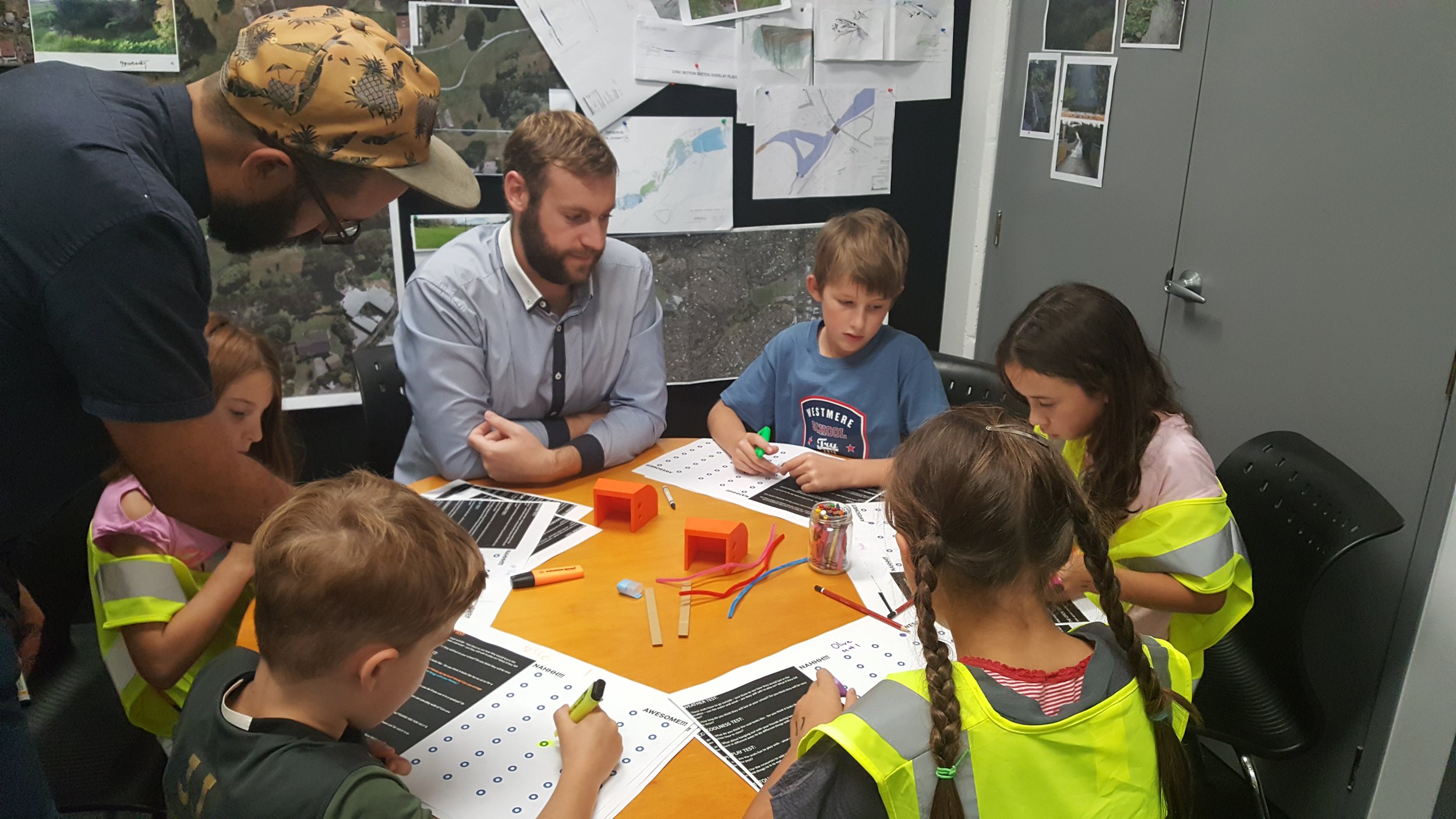The argument for getting kids involved in design
Isthmus associate landscape architect Damian Powley makes a case for why children should be involved in the design process for most architectural sites – not just playgrounds and schools.
At Isthmus, we regularly ignore the advice of actor W.C Fields who famously said, “Never work with animals or children”. While working with children as part of the design process can be hard work and not part of our norm, it is hugely beneficial, and incredibly rewarding.
We love our tamariki. We celebrate their enthusiasm and innocence – and their tendency to state the obvious. Kids (thankfully) don’t get caught up in the drama of adulthood. They are fresh, honest, and not afraid to speak their mind. For a group often overlooked in the design process, inquisitive kids often make the task more profound, real, and honest. Perhaps the question is not should we involve kids, but how can we involve kids more in a meaningful design process?
Landscape architect Damian Powley says children should be involved in design processes.
We need to design a playground – great! Let’s ask some kids...
Kids engage in all the same aspects of modern life and the environment around us that adults do – and certainly more than just playgrounds. They are influenced by the world around us, just like adults. So we should honour their right to participate and have a voice. After all, we are creating healthy places for the whole community to live, work and play, and that includes children.
If we consider what the barriers are to actively involving kids in design, we might want to think about whether we are approaching kids in a meaningful way, as well as whether we are asking the right questions or using the right tools.
Yes, a chair is for sitting – but what else can a chair do while being sat on? How does it connect with those you are sitting with? What if it moves? What happens when it is not being sat on? If kids are given the space to creatively explore these questions, inevitably, something completely new emerges.
Damian Powley (left) working on design with a group of children.
A typical Q&A survey approach generally doesn’t offer much new insight when engaging with kids. Children are natural designers, innovators and inventors, creators and explorers of our everyday world – they love getting their hands dirty. They often learn and contribute best with tactile and physical activities, and the design process teaches them good life skills, like how to try, fail, and try again.
Our advice: consider throwing in a whole heap of cardboard boxes, some Lego and clay
Who knows what will come out of the process when working with kids? Generally, that’s the whole point – we need to frame the purpose and outcomes really well, while being prepared to embrace the unexpected. It’s a mindset for adults and a ‘state’ for kids. Once we reframe our approach towards involving kids in design, we open up the opportunity to find out what we don’t know, what we haven’t considered, or what we didn’t even think was possible.
Does that then mean involving kids is just as simple as handing out a box of art and craft materials, and that’s it? It’s quite a different approach getting kids ‘into’ what we are doing – making it fun and playful. Observing and listening are just as important as what is crafted or recorded. Noticing body language, how they interact, and what excites them. You have to be quick though – moments can emerge and disappear in a blink.
Out of the box thinking follows when children are involved.
That may sound like hard work, but the results are well worth it. In fact we have our own Isthmus Tamariki DesignLAB because we believe in the importance of shaping, prototyping and testing our designs with the ‘real’ users. We recently explored a seat design for an outdoor learning environment with our Tamariki DesignLAB.
Yes, a chair is for sitting – but what else can a chair do while being sat on? How does it connect with those you are sitting with? What if it moves? What happens when it is not being sat on? If kids are given the space to creatively explore these questions, inevitably, something completely new emerges.
Yes, it will need refinement, and yes, for a whole heap of reasons it may not work. But in that moment, that spark of insight that might otherwise be missed – and the designer’s ability to realise the potential of that spark – is where the true value lies. Imagine what we could uncover if we applied that approach to something larger – say, the whole city.
Powley believes children bring a new perspective to all projects.
Our thinking of community and a kid’s perspective within that is changing. Considering that ‘kid’ spaces are more than just playgrounds and schools, we start to consider how kids move in the built environment, who do they go with, and what is memorable along the way. By designing with kids for suburban regeneration projects – including a ‘Greenway’ in Northcote, Auckland – we are observing, creating and refining their home environment together, and finding out what is important for them in their everyday lives. From Primary to College, these are the future community leaders.
We know that what is good for the child is good for the family. What is good for the family is generally good for the community, and what is good for the community, is generally good for everyone. That’s why Isthmus have developed specific tools and techniques to engage with children in the design process, to capture their creative energy and use it to invigorate our spaces and places.
This story was first published on Idealog.co.nz



